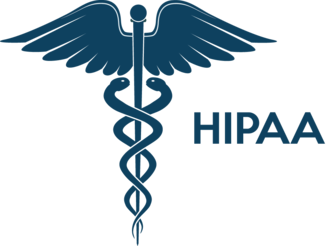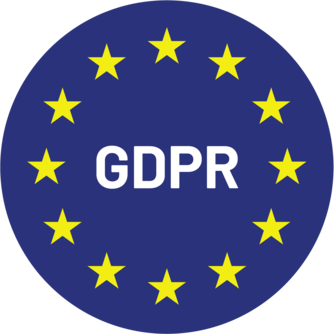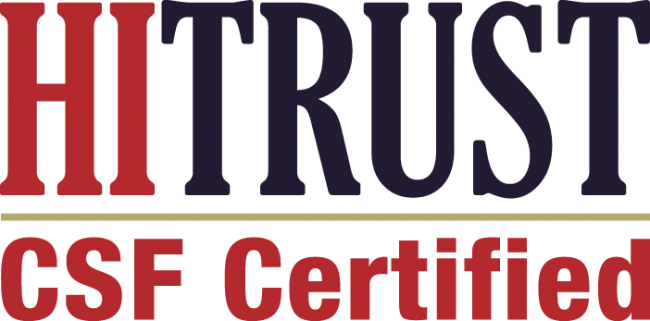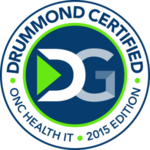Transitional Care Management (TCM) represents a critical component of modern healthcare delivery, bridging the gap between inpatient care and community-based follow-up. As healthcare systems increasingly focus on value-based care and reducing readmission rates, implementing a robust TCM program has become essential for healthcare practices seeking to improve patient outcomes while optimizing revenue streams.
This comprehensive guide provides healthcare practices with a roadmap for establishing or enhancing their TCM programs, covering everything from initial planning to full implementation and ongoing optimization.
Understanding TCM: Foundation and Benefits
What is Transitional Care Management?
Transitional Care Management encompasses the coordination and continuity of healthcare during transitions between care settings. The Medicare TCM program, established in 2013, recognizes the importance of this care transition period by providing specific billing codes (99495 and 99496) for comprehensive post-discharge management services.
Key Benefits of TCM Programs
Patient Outcomes:
- Reduced hospital readmissions by up to 25%
- Improved medication adherence and safety
- Enhanced patient satisfaction scores
- Better management of chronic conditions
- Reduced emergency department visits
Practice Benefits:
- Additional revenue stream through TCM billing
- Improved care coordination efficiency
- Enhanced provider-patient relationships
- Better population health management
- Compliance with quality reporting requirements
Healthcare System Impact:
- Lower overall healthcare costs
- Reduced strain on hospital resources
- Improved care quality metrics
- Enhanced physician reputation and referral patterns
Phase 1: Assessment and Planning
Current State Analysis
Before implementing a TCM program, conduct a thorough assessment of your practice’s current capabilities and readiness.
Patient Population Assessment: Analyze your patient demographics to identify the target population for TCM services. Focus on patients with:
- Multiple chronic conditions
- Recent hospitalizations
- High healthcare utilization patterns
- Complex medication regimens
- Limited social support systems
Resource Evaluation: Document existing resources, including staff availability, technology infrastructure, and current care coordination processes. Identify gaps that need addressing for successful TCM implementation.
Workflow Analysis: Map current patient flow from hospital discharge through follow-up care, noting bottlenecks and opportunities for improvement.
Goal Setting and Metrics
Establish clear, measurable objectives for your TCM program:
Clinical Goals:
- Reduce 30-day readmission rates by a specific percentage
- Improve medication reconciliation accuracy to 95% or higher
- Achieve patient contact within required timeframes
- Enhance chronic disease management outcomes
Operational Goals:
- Process a target number of TCM patients monthly
- Maintain specific response times for patient communications
- Achieve desired patient satisfaction scores
- Meet or exceed revenue targets
Quality Metrics:
- Patient engagement rates
- Care plan adherence percentages
- Provider satisfaction with the program
- Time to first post-discharge contact
Phase 2: Staffing Requirements and Role Definition
Core Team Structure
TCM Coordinator (Primary Role): This position serves as the backbone of your TCM program. Ideal candidates should have:
- Nursing background with care coordination experience
- Strong communication and organizational skills
- Knowledge of chronic disease management
- Familiarity with electronic health records
- Understanding of Medicare billing requirements
Key Responsibilities:
- Initial patient contact within 24-48 hours post-discharge
- Comprehensive medication reconciliation
- Care plan development and monitoring
- Patient education and engagement
- Documentation for billing compliance
- Coordination with providers and specialists
Provider Involvement: Physicians and nurse practitioners must be actively engaged in the TCM process:
- Review and approve care plans
- Conduct required face-to-face visits
- Make clinical decisions based on TCM coordinator findings
- Provide direct patient care as needed
Supporting Staff:
- Medical assistants for appointment scheduling and basic patient communication
- Administrative staff for insurance verification and billing
- Pharmacy liaison for medication management support
- Social worker or case manager for complex psychosocial needs
Staffing Models
Dedicated Model: Assign specific staff members exclusively to TCM activities. This approach works well for larger practices with high patient volumes.
Integrated Model: Incorporate TCM responsibilities into existing care coordination roles. Suitable for smaller practices with limited resources.
Hybrid Model: Combine dedicated TCM staff with integrated support from existing team members, providing flexibility and scalability.
Training Requirements
Develop comprehensive training programs covering:
- TCM program objectives and workflows
- Medicare billing requirements and documentation
- Chronic disease management protocols
- Communication techniques for patient engagement
- Technology platform utilization
- Quality improvement processes
Phase 3: Workflow Development
Patient Identification and Enrollment
Hospital Notification Systems: Establish reliable mechanisms for identifying patients eligible for TCM services:
- Daily hospital census reviews
- Electronic health record alerts
- Hospital discharge planning partnerships
- Health information exchange participation
Enrollment Criteria: Define clear criteria for TCM program participation:
- Patients with qualifying discharges from hospitals or skilled nursing facilities
- Established patients of the practice
- Medicare beneficiaries (primary focus)
- Patients with moderate to high medical complexity
- Consent to participate in the program
Exclusion Criteria:
- Patients discharged to hospice care
- Those requiring immediate readmission
- Patients who decline participation
- Those without decision-making capacity and no available surrogate
Core Workflow Processes
Step 1: Initial Contact (Within 2 Business Days)
- Obtain discharge information from the hospital
- Review discharge summary and medication list
- Contact patient via phone for initial assessment
- Document communication attempt and outcome
- Schedule follow-up appointment if needed
Step 2: Comprehensive Assessment
- Conduct detailed review of discharge instructions
- Perform medication reconciliation
- Assess patient understanding of treatment plan
- Identify potential barriers to care adherence
- Evaluate home environment and support systems
Step 3: Care Plan Development
- Create individualized care plan addressing identified needs
- Establish monitoring schedules for chronic conditions
- Coordinate specialty referrals if required
- Arrange necessary home health or other services
- Set patient-specific goals and milestones
Step 4: Interactive Communication
- Maintain regular contact throughout the TCM period
- Provide patient education and support
- Monitor medication adherence and side effects
- Address emerging health concerns promptly
- Coordinate with other healthcare providers
Step 5: Face-to-Face Visit
- Schedule and conduct required provider visit within 7 or 14 days
- Perform comprehensive clinical evaluation
- Adjust treatment plans based on assessment findings
- Complete TCM billing documentation
- Plan for ongoing care management
Documentation Standards
Required Elements:
- Date and time of all patient contacts
- Method of communication (phone, secure messaging, in-person)
- Assessment findings and patient responses
- Care plan modifications
- Medication changes or reconciliation activities
- Patient education provided
- Coordination activities with other providers
Best Practices:
- Use standardized templates for consistency
- Document in real-time when possible
- Include patient quotes to demonstrate engagement
- Track measurable outcomes and improvements
- Maintain detailed billing compliance records
Phase 4: Technology Integration
Electronic Health Record Optimization
TCM-Specific Templates: Develop standardized documentation templates that include:
- TCM assessment forms
- Care plan templates
- Communication logs
- Medication reconciliation worksheets
- Patient education tracking tools
Workflow Automation: Implement automated processes where possible:
- Hospital discharge alerts
- Patient contact reminders
- Appointment scheduling triggers
- Documentation prompts
- Billing code suggestions
Reporting Capabilities: Configure your EHR to generate reports on:
- TCM patient volumes and outcomes
- Staff productivity metrics
- Clinical quality indicators
- Financial performance data
- Program compliance measures
Communication Platforms
Patient Communication Tools:
- Secure messaging systems for patient interaction
- Automated appointment reminders
- Educational material delivery platforms
- Telehealth capabilities for virtual visits
- Mobile apps for patient engagement
Provider Communication:
- Secure messaging between team members
- Real-time care plan updates
- Hospital discharge notification systems
- Specialist communication platforms
- Care coordination dashboards
Remote Monitoring Technology
Consider integrating remote monitoring tools:
- Blood pressure monitors for hypertensive patients
- Glucometers for diabetic patients
- Weight scales for heart failure management
- Medication adherence monitoring systems
- Wearable devices for activity and vital sign tracking
Comprehensive TCM Platform Solutions
Modern healthcare practices increasingly benefit from integrated TCM platforms that streamline the entire care transition process. Solutions like the HealthViewX Transitional Care Management application provide end-to-end functionality designed specifically for TCM programs, offering automated patient identification, standardized workflows, real-time care coordination, and comprehensive documentation capabilities. Such platforms can significantly reduce implementation complexity by providing pre-built TCM workflows, automated compliance tracking, and seamless EHR integration, allowing practices to focus on patient care rather than administrative burden.
Phase 5: Implementation Strategy
Pilot Program Launch
Start Small: Begin with a limited patient population to test workflows and identify areas for improvement:
- Select 10-15 patients for initial pilot
- Choose patients with straightforward medical needs
- Focus on refining processes before scaling
- Gather feedback from staff and patients
Timeline Considerations:
- Week 1-2: Staff training and system setup
- Week 3-4: Pilot launch with selected patients
- Week 5-8: Process refinement and optimization
- Week 9-12: Gradual expansion of patient volume
Scaling Strategies
Gradual Expansion: Increase patient volume systematically:
- Add 5-10 new patients weekly
- Monitor staff capacity and workflow efficiency
- Adjust staffing levels as needed
- Maintain quality while increasing volume
Quality Monitoring: Track key performance indicators throughout expansion:
- Patient contact timeliness
- Documentation completeness
- Patient satisfaction scores
- Clinical outcome measures
- Staff satisfaction levels
Change Management
Staff Engagement:
- Communicate program benefits clearly
- Provide ongoing training and support
- Recognize and reward early adopters
- Address concerns and resistance promptly
- Celebrate program successes
Provider Buy-In:
- Demonstrate value proposition for physicians
- Show impact on patient outcomes
- Highlight revenue opportunities
- Provide regular progress updates
- Seek input on program improvements
Phase 6: Quality Assurance and Compliance
Billing Compliance
TCM Code Requirements:
99495 (Moderate Complexity):
- Interactive communication within 2 business days
- Face-to-face visit within 14 days of discharge
- 30 minutes of non-face-to-face services
- Medical decision-making of moderate complexity
99496 (High Complexity):
- Interactive communication within 2 business days
- Face-to-face visit within 7 days of discharge
- 30 minutes of non-face-to-face services
- Medical decision-making of high complexity
Documentation Best Practices:
- Maintain detailed time logs for all activities
- Document medical decision-making rationale
- Record all patient interactions comprehensively
- Keep evidence of care coordination efforts
- Ensure provider signature on all required elements
Quality Improvement Processes
Regular Audits: Conduct monthly reviews of:
- Documentation completeness and accuracy
- Billing compliance adherence
- Patient contact timeliness
- Care plan effectiveness
- Staff performance metrics
Continuous Improvement:
- Analyze patient outcome data regularly
- Identify process improvement opportunities
- Implement corrective actions promptly
- Share best practices across the team
- Update protocols based on evidence and experience
Risk Management
Common Pitfalls to Avoid:
- Inadequate initial patient contact timing
- Incomplete medication reconciliation
- Poor documentation practices
- Insufficient provider involvement
- Lack of patient engagement strategies
Mitigation Strategies:
- Implement automated reminder systems
- Use standardized checklists and templates
- Conduct regular staff training updates
- Monitor compliance metrics closely
- Establish clear escalation procedures
Phase 7: Performance Measurement and Optimization
Key Performance Indicators
Clinical Metrics:
- 30-day readmission rates
- Emergency department visits post-discharge
- Medication adherence rates
- Patient-reported outcome measures
- Chronic disease management indicators
Operational Metrics:
- Time to initial patient contact
- Percentage of patients reached within required timeframe
- Face-to-face visit completion rates
- Patient enrollment rates
- Staff productivity measures
Financial Metrics:
- TCM billing volumes and revenue
- Cost per patient managed
- Return on investment calculations
- Payer mix analysis
- Denial rates and appeals outcomes
Data Analysis and Reporting
Monthly Reporting: Create comprehensive dashboards showing:
- Program volume and growth trends
- Clinical outcome improvements
- Financial performance data
- Staff productivity metrics
- Patient satisfaction scores
Benchmarking: Compare performance against:
- Industry standards and best practices
- Historical practice performance
- Peer organization outcomes
- National quality benchmarks
- Payer-specific requirements
Optimization Strategies
Process Improvements:
- Streamline workflow inefficiencies
- Implement technology solutions
- Enhance staff training programs
- Improve patient communication methods
- Strengthen provider engagement
Service Expansion: Consider expanding TCM services to include:
- Additional patient populations
- Extended monitoring periods
- Specialized chronic disease programs
- Partnership with post-acute care facilities
- Integration with wellness programs
Financial Considerations and ROI
Revenue Potential
Billing Opportunities:
- TCM codes 99495 and 99496 provide significant revenue potential
- Average reimbursement ranges from $165 to $236 per patient
- Monthly revenue potential depends on patient volume and complexity
- Additional opportunities through improved chronic care management
Cost Structure:
- Staff salaries and benefits for dedicated TCM personnel
- Technology infrastructure and software licenses
- Training and development expenses
- Administrative overhead costs
- Quality assurance and compliance activities
Return on Investment Calculation
Revenue Components:
- Direct TCM billing revenue
- Increased office visit volume
- Improved chronic care management payments
- Potential shared savings from reduced readmissions
- Enhanced provider productivity and capacity
Cost-Benefit Analysis: Most successful TCM programs achieve positive ROI within 6-12 months of implementation, with ongoing returns significantly exceeding initial investment costs.
Common Challenges and Solutions
Implementation Challenges
Hospital Communication:
- Challenge: Inconsistent or delayed discharge notifications
- Solution: Establish formal partnerships with local hospitals and implement automated notification systems
Staff Resistance:
- Challenge: Reluctance to adopt new workflows and responsibilities
- Solution: Provide comprehensive training, demonstrate value, and recognize early adopters
Technology Solutions:
- Challenge: Complex system integration and workflow setup
- Solution: Consider comprehensive TCM platforms like HealthViewX that provide pre-configured workflows, automated compliance tracking, and seamless integration capabilities, reducing implementation time and complexity while ensuring best practices are built into the system from the start
Operational Challenges
Patient Engagement:
- Challenge: Difficulty reaching patients or obtaining their participation
- Solution: Use multiple communication channels, flexible scheduling, and patient education about program benefits
Documentation Burden:
- Challenge: Time-intensive documentation requirements
- Solution: Implement templates, automated tools, and efficient workflow processes
Provider Scheduling:
- Challenge: Accommodating required face-to-face visits within timeframes
- Solution: Block dedicated TCM appointment slots and utilize mid-level providers appropriately
Future Trends and Considerations
Evolving Landscape
Value-Based Care Integration: TCM programs are becoming integral components of accountable care organizations and value-based payment models, creating additional opportunities for practices to benefit from improved outcomes.
Technology Advancement: Artificial intelligence and machine learning tools are beginning to enhance TCM programs through predictive analytics, automated risk stratification, and personalized care recommendations.
Population Health Management: TCM programs are expanding beyond individual patient care to encompass broader population health initiatives and chronic disease prevention strategies.
Strategic Planning
Long-Term Vision: Consider how TCM programs fit into your practice’s overall strategic plan:
- Integration with other care management programs
- Expansion to serve additional patient populations
- Partnership opportunities with health systems and payers
- Technology investments for enhanced capabilities
- Staff development and succession planning
Conclusion
Building a successful TCM program requires careful planning, dedicated resources, and ongoing commitment to quality improvement. Healthcare practices that invest in comprehensive TCM programs typically see significant benefits in patient outcomes, provider satisfaction, and financial performance.
The key to success lies in understanding that TCM is not simply another billing opportunity but a fundamental shift toward more coordinated, patient-centered care. By following this step-by-step implementation guide, healthcare practices can develop robust TCM programs that deliver value to patients, providers, and the broader healthcare system.
Success in TCM requires patience, persistence, and continuous refinement. Start with a solid foundation, implement processes systematically, and remain committed to quality and compliance. The investment in building a strong TCM program will pay dividends through improved patient relationships, better clinical outcomes, and enhanced practice sustainability in an increasingly value-focused healthcare environment.
Remember that TCM implementation is not a one-time project but an ongoing journey of improvement and optimization. Regular evaluation, staff feedback, and patient input should guide continuous refinement of your program to ensure it meets the evolving needs of your practice and patient population.
This guide serves as a comprehensive framework for TCM program implementation. Healthcare practices should consult with healthcare attorneys, billing specialists, and clinical experts to ensure compliance with all applicable regulations and best practices specific to their situation and location.



